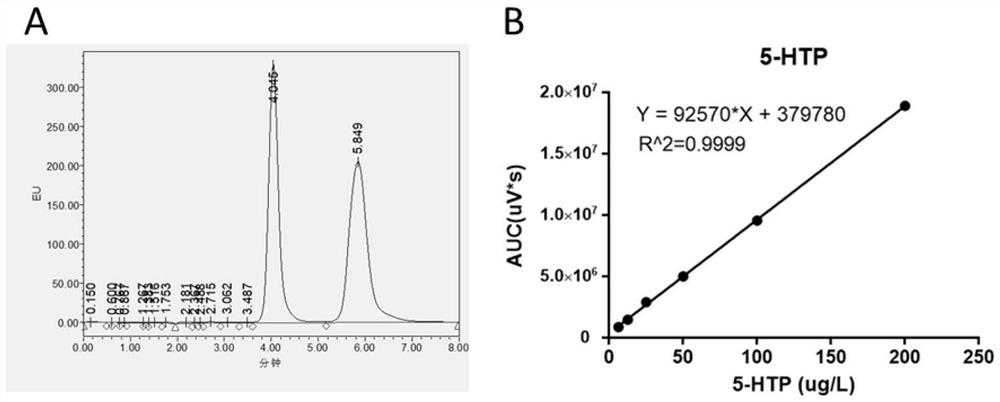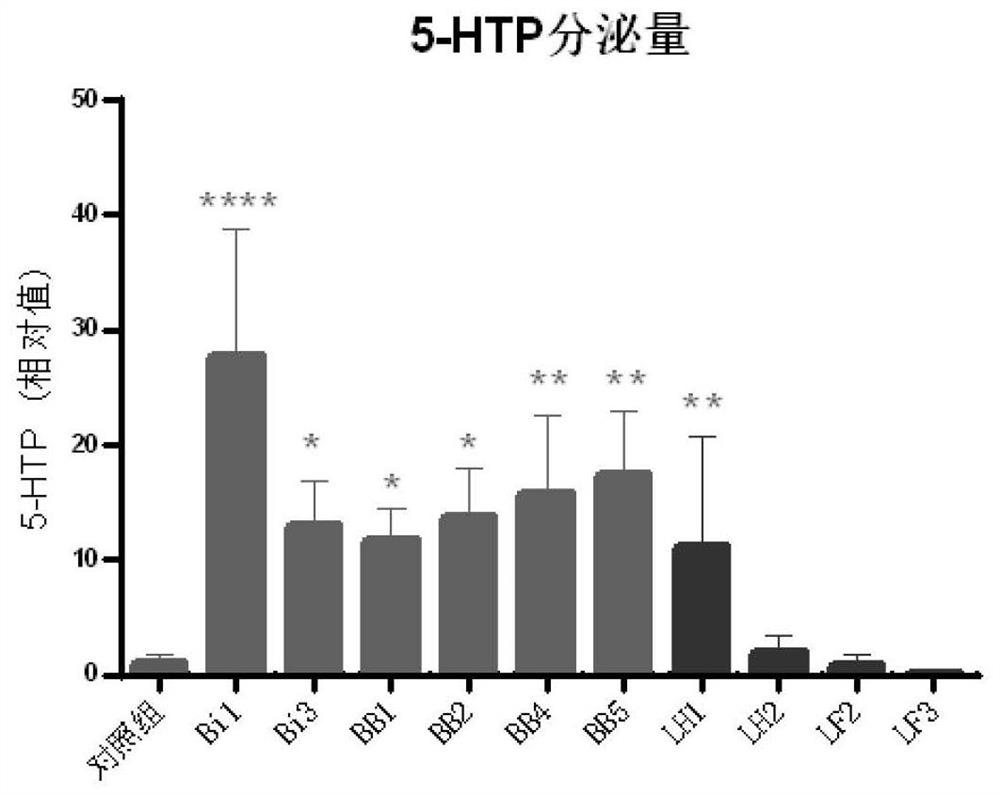A method for screening probiotics that achieve antidepressant function through 5-hydroxytryptophan-related pathway based on cellular level
A hydroxytryptophan, cell-level technology, applied in biochemical equipment and methods, biological testing, microbial determination/inspection, etc., can solve problems such as unexplainable, high cost, and long time-consuming
- Summary
- Abstract
- Description
- Claims
- Application Information
AI Technical Summary
Problems solved by technology
Method used
Image
Examples
Embodiment 1
[0033] Example 1: Using RIN14B cells to screen probiotics with antidepressant potential through 5-hydroxytryptophan-related pathways
[0034] Cell culture:
[0035]RIN14B (ATCC CRL-2059) cells belong to the rat insulinoma cell line, and the medium is RPMI-1640 supplemented with 1% double antibody (100U / mL penicillin and 100μg / mL streptomycin) and 10% fetal bovine serum (FBS) Complete medium (or DMEM medium). Cells were incubated at 37°C with 5% CO 2 Culture in a closed incubator, and replace the culture medium every 2-3 days according to the growth status of the cells. During passage and cryopreservation, cells were digested with 0.25% trypsin digestion solution. The digestion time is 1-2min. The number of cell passages used in this example is 10-20 passages.
[0036] Probiotic culture:
[0037] The strains used are listed in Table 1. After the strain is activated, inoculate 1% inoculum in MRS liquid medium, culture at 37°C for 20 hours, centrifuge at 3000 rpm for 10 mi...
Embodiment 2
[0052] Embodiment 2: the animal experiment verification of the effective bacterial strain of cell screening
[0053] 1. Establishment and treatment of chronic stress and depression mouse model
[0054] Seventy-eight 6-week-old male C57BL / 6J mice were randomly divided into four groups according to body weight after acclimatization for one week: control group, model group, fluoxetine intervention group, and probiotics intervention group (respectively gavage the 10 strains of probiotics), each group contained 6 mice. Animal grouping and treatment methods are shown in Table 2.
[0055] Table 2 Grouping and processing methods of animal experiments
[0056]
[0057]
[0058] Chronic unpredictable stress depression mouse model: 1-2 kinds of stimuli are randomly used every day, and the time of stimulation is randomly determined every day to avoid circadian rhythm. No more than three times of each method for a period of five weeks. Stimulus factors include: (1) fasting for 24...
Embodiment 3
[0072] Correlation Analysis of Example 3 Cell Screening Results and Animal Experiment Results:
[0073] In order to further verify the validity of the cell screening model, Pearson correlation analysis was performed on the results of cell experiments (5-HTP and TPH1) and each detection index of animal experiments. The result is as Figure 8 As shown, where blue represents positive correlation, red represents negative correlation, and the size of the dot area reflects the size of the correlation coefficient. It can be seen that the expression of TPH1 mRNA and the secretion of 5-HTP in RIN14B cells are positively correlated with the behavioral performance (reduction of depressive symptoms) and BDNF level in the prefrontal cortex in animal experiments, and negatively correlated with HPA hyperfunction. Among them, the amount of 5-HTP secreted by RIN14B cells was significantly positively correlated with the sugar preference of mice, the shortening of platform jumping latency, and ...
PUM
 Login to View More
Login to View More Abstract
Description
Claims
Application Information
 Login to View More
Login to View More - R&D
- Intellectual Property
- Life Sciences
- Materials
- Tech Scout
- Unparalleled Data Quality
- Higher Quality Content
- 60% Fewer Hallucinations
Browse by: Latest US Patents, China's latest patents, Technical Efficacy Thesaurus, Application Domain, Technology Topic, Popular Technical Reports.
© 2025 PatSnap. All rights reserved.Legal|Privacy policy|Modern Slavery Act Transparency Statement|Sitemap|About US| Contact US: help@patsnap.com



